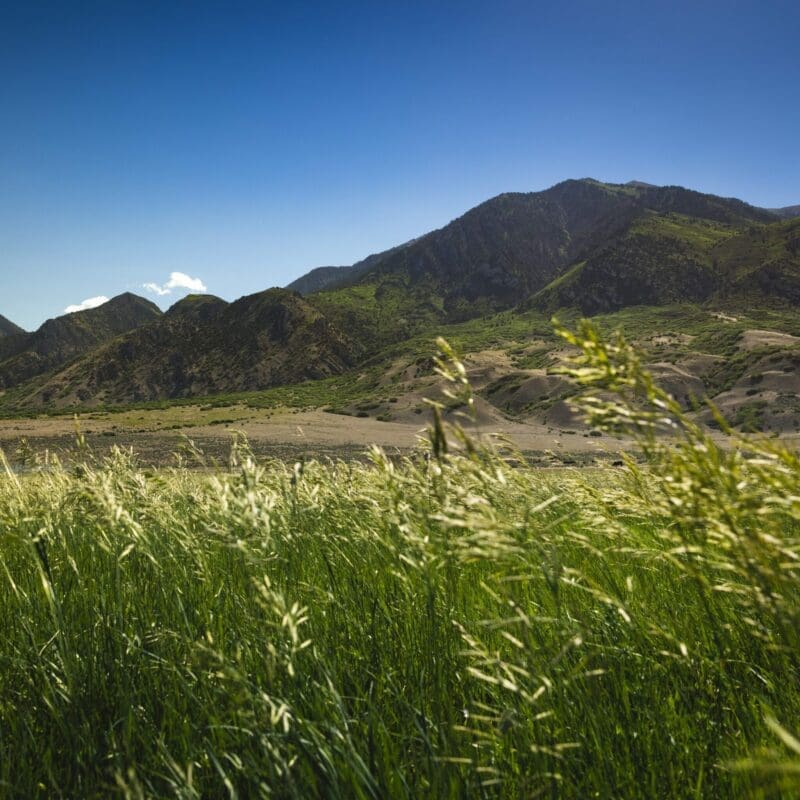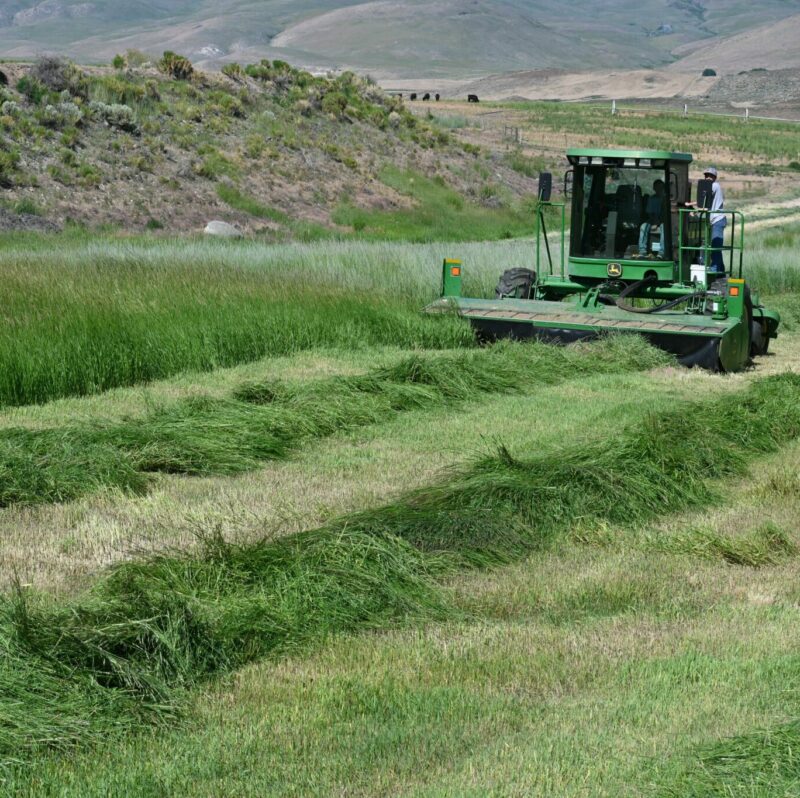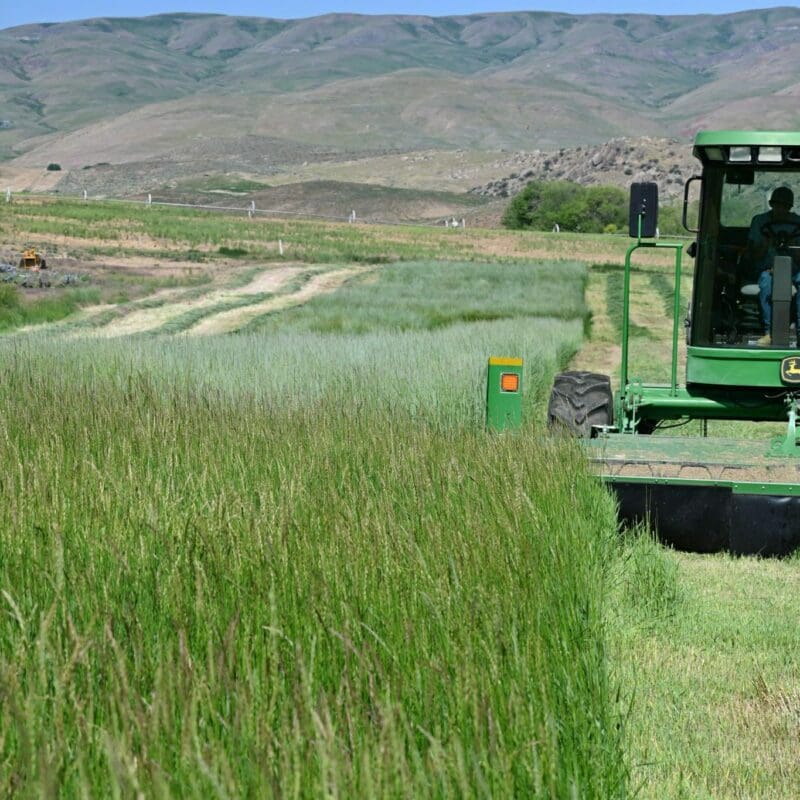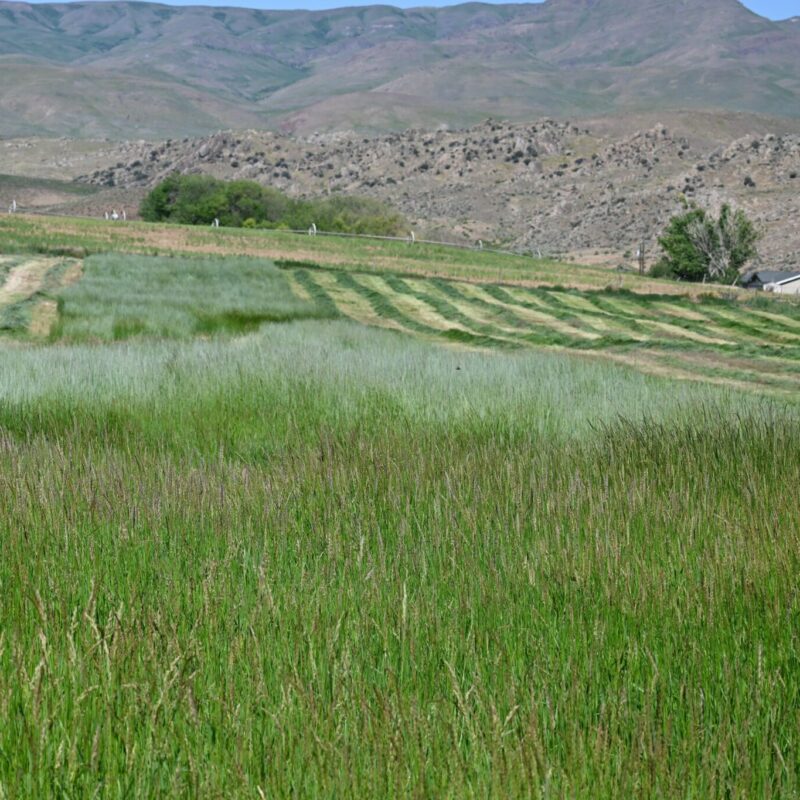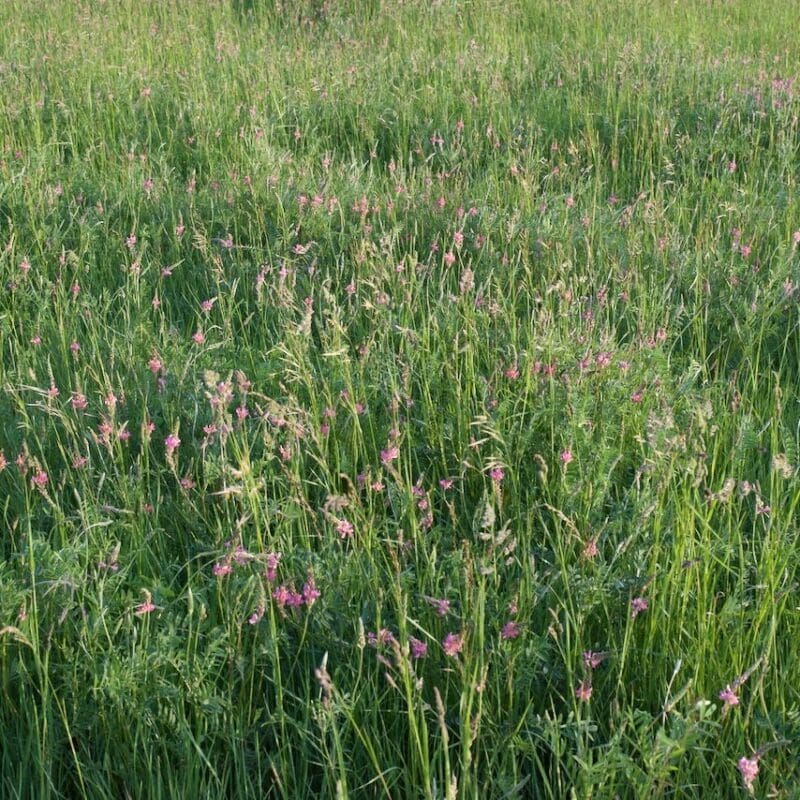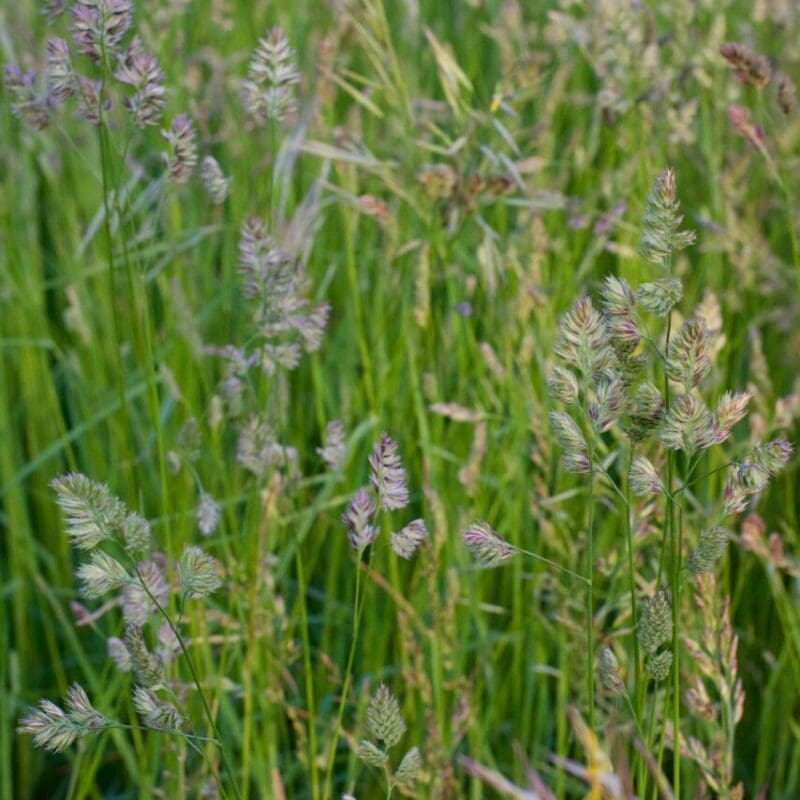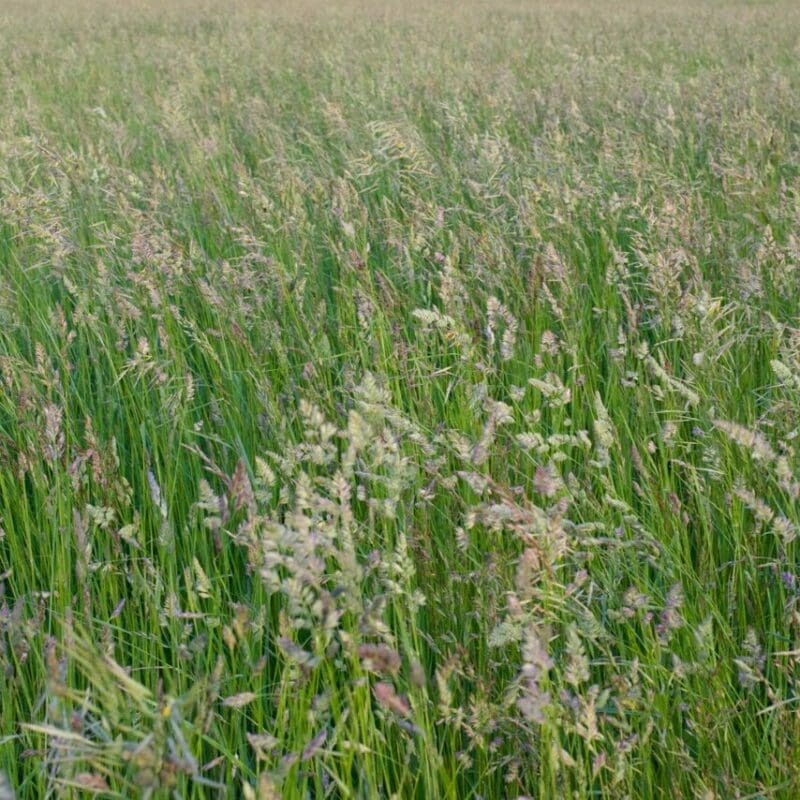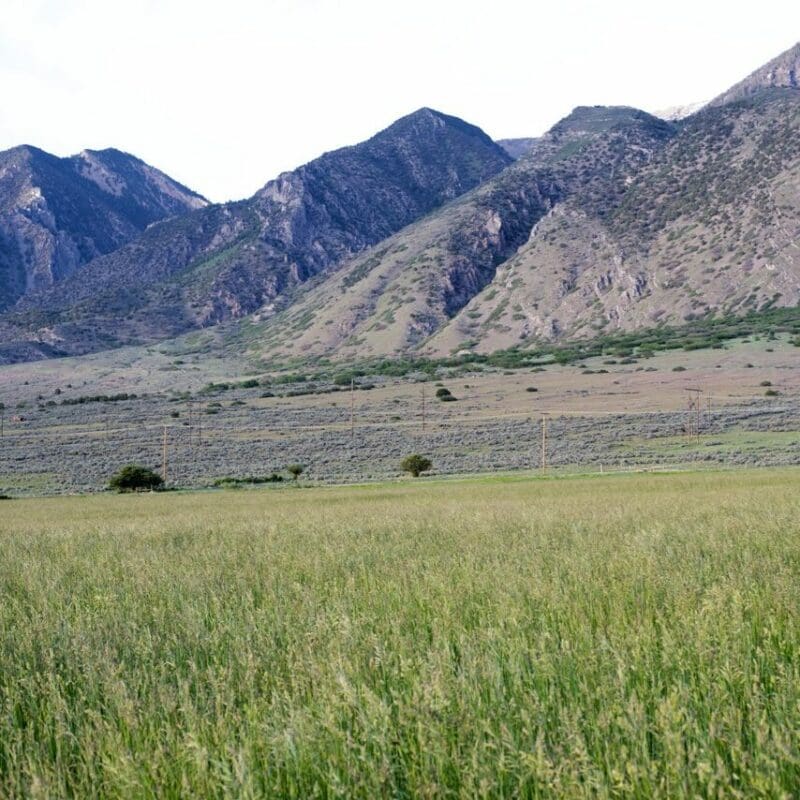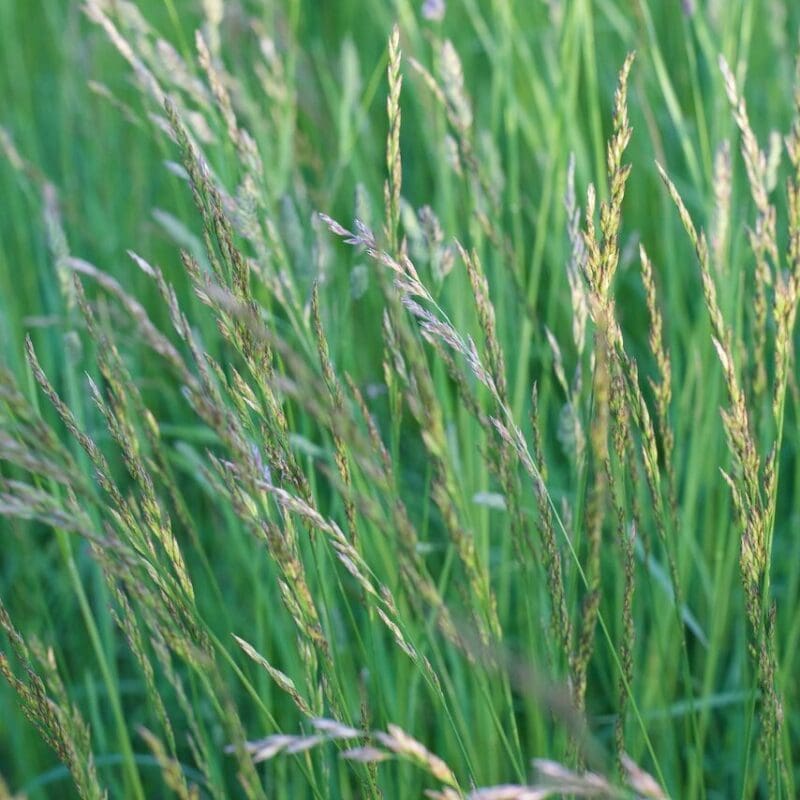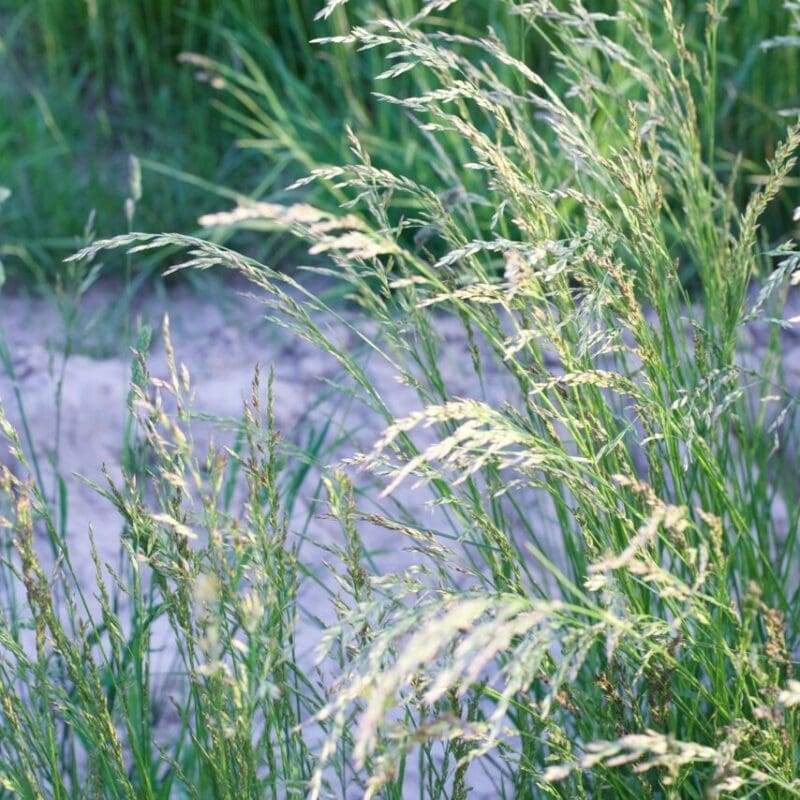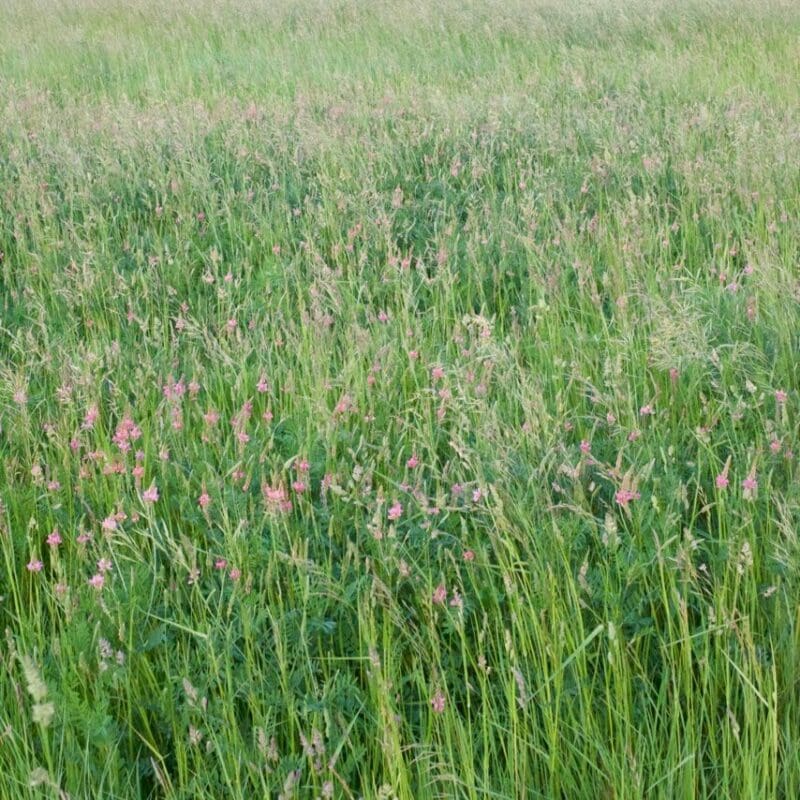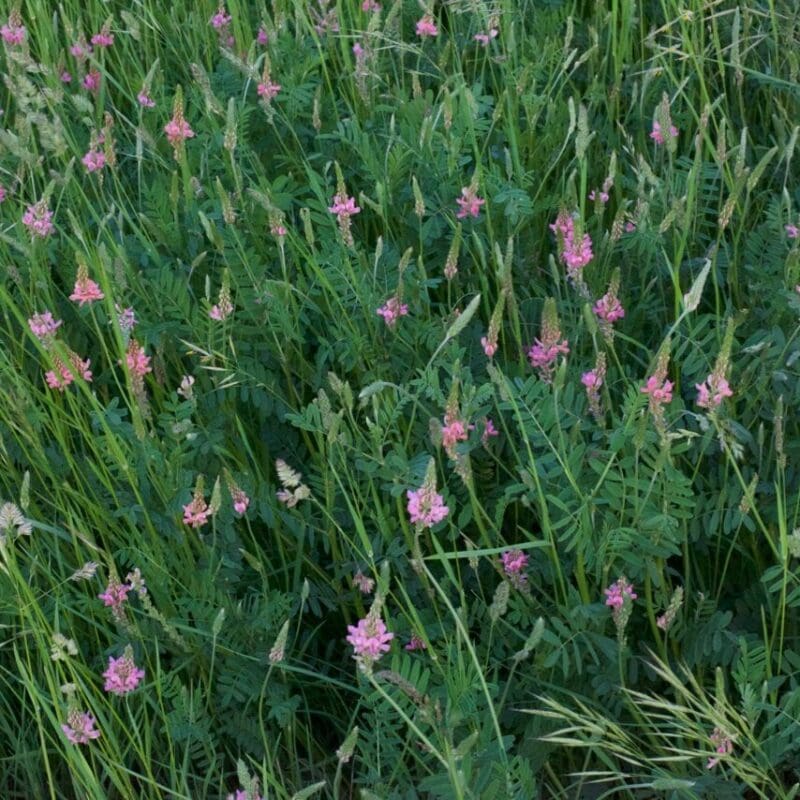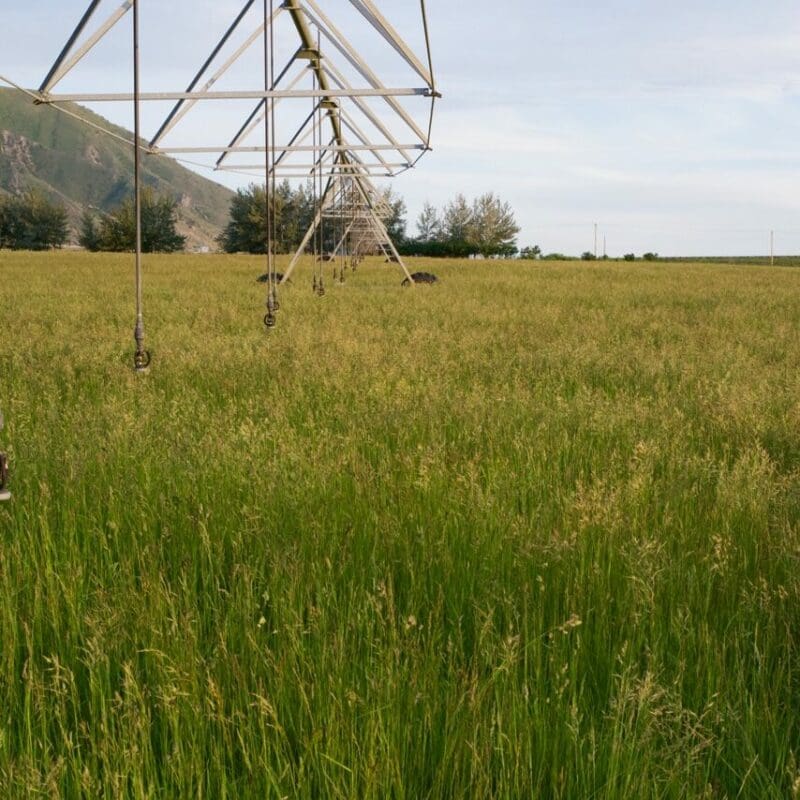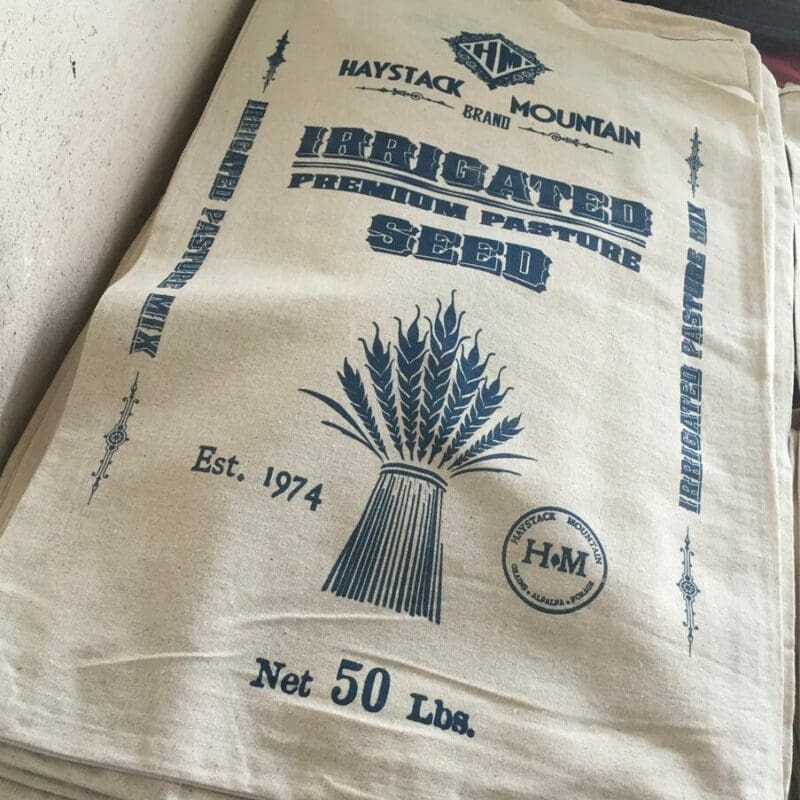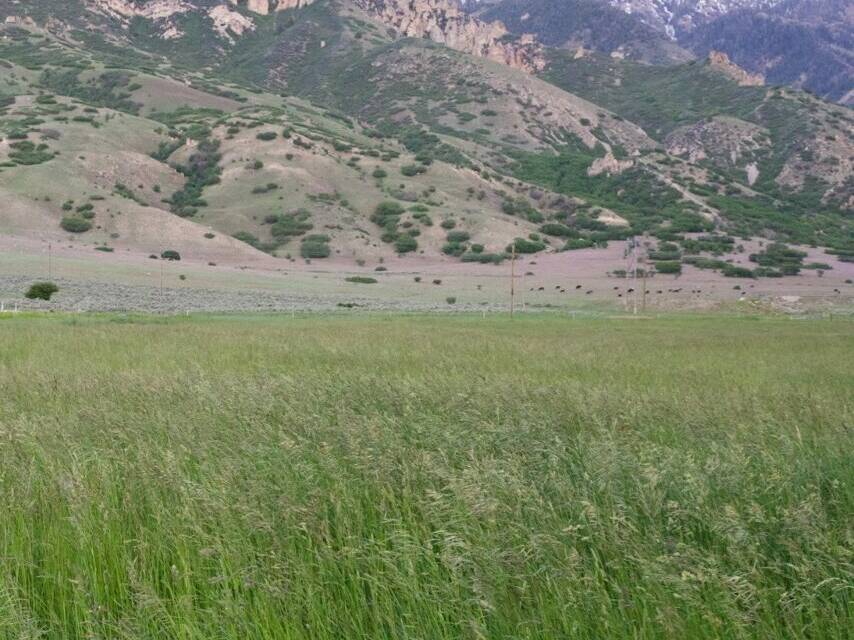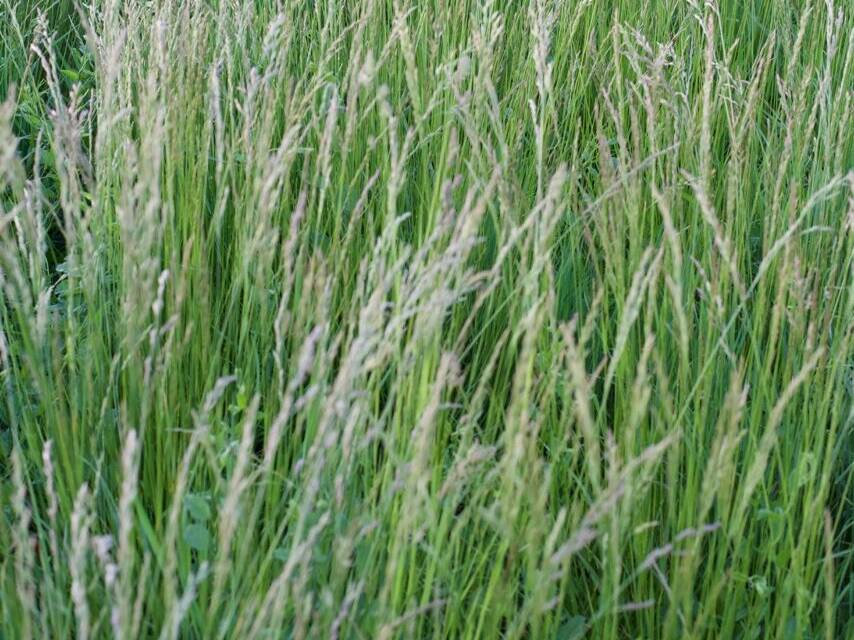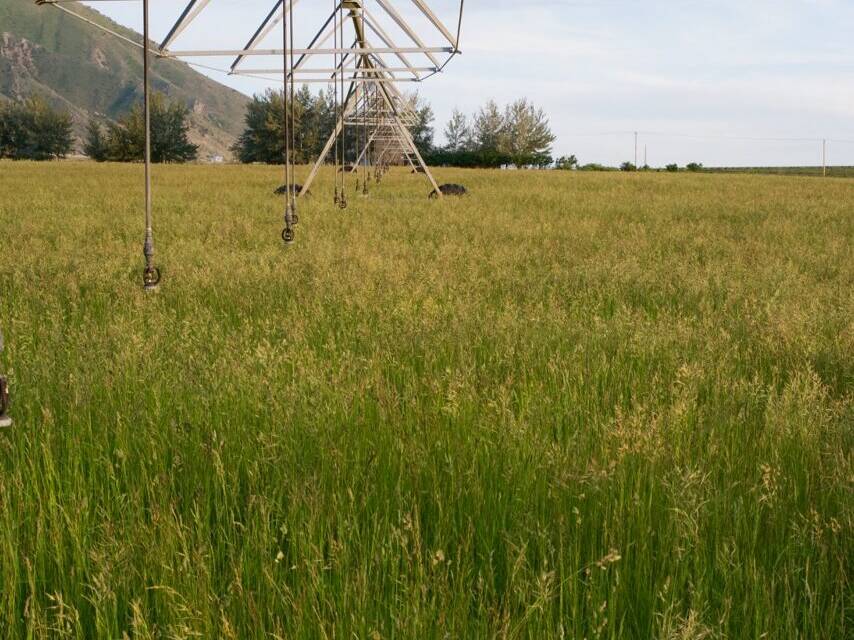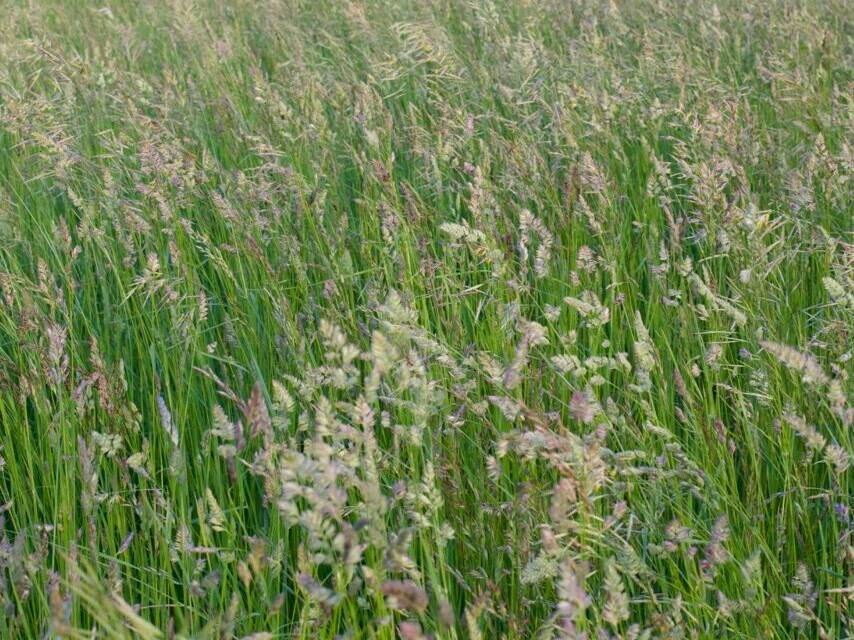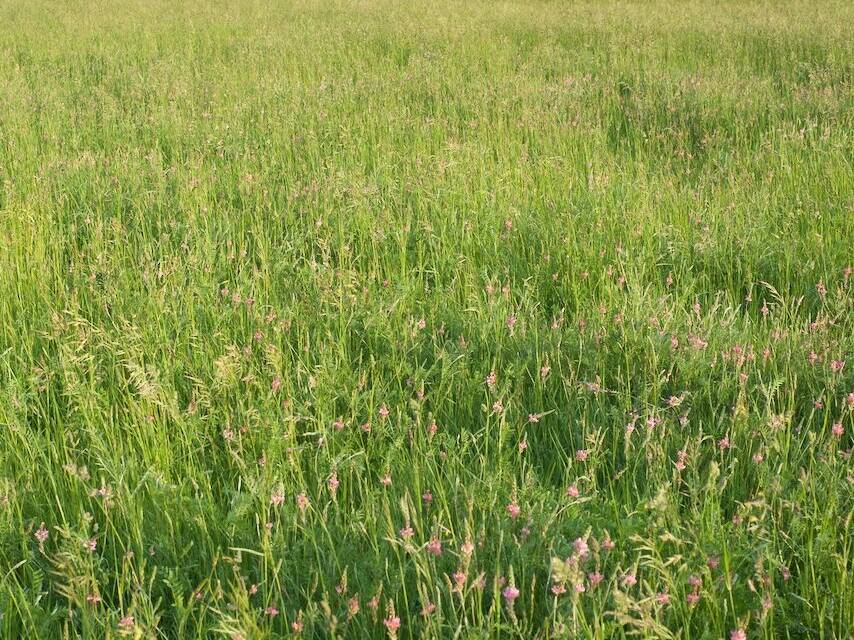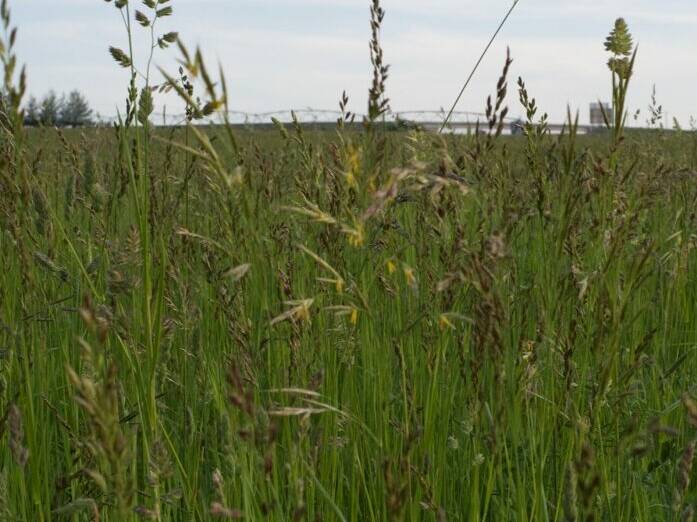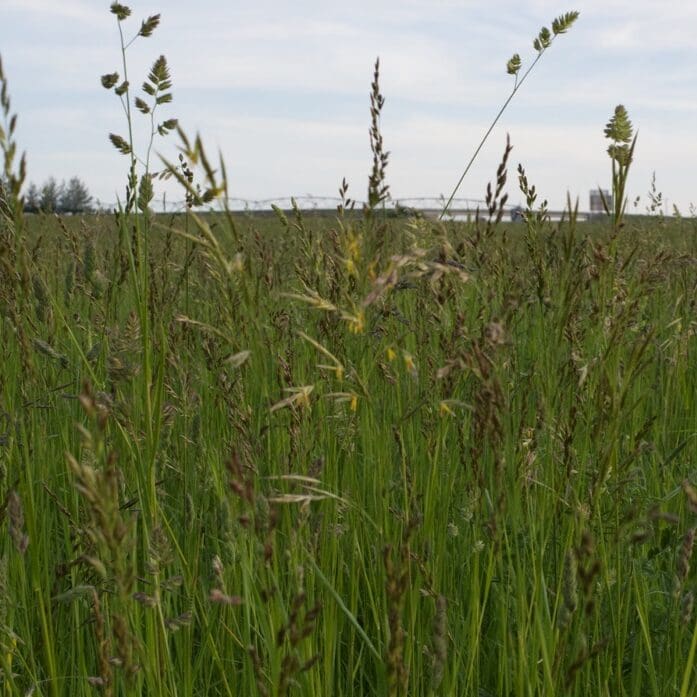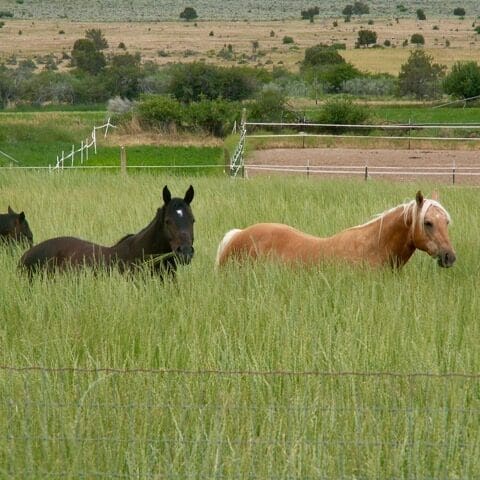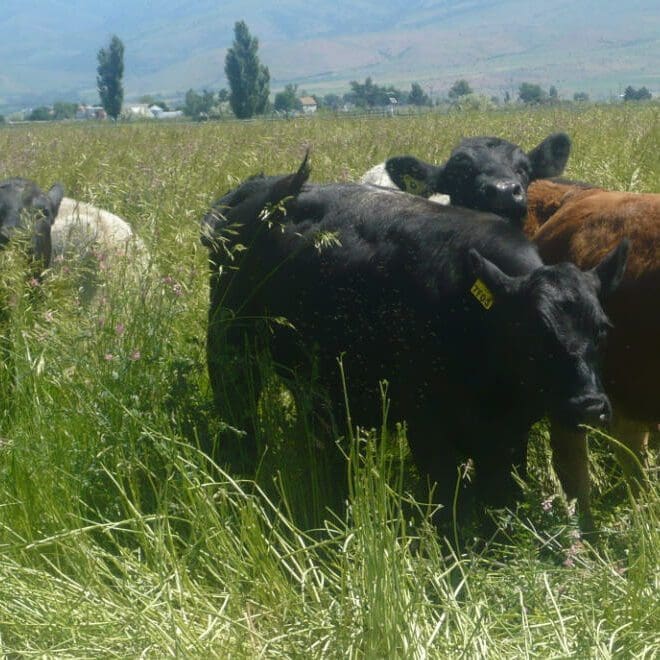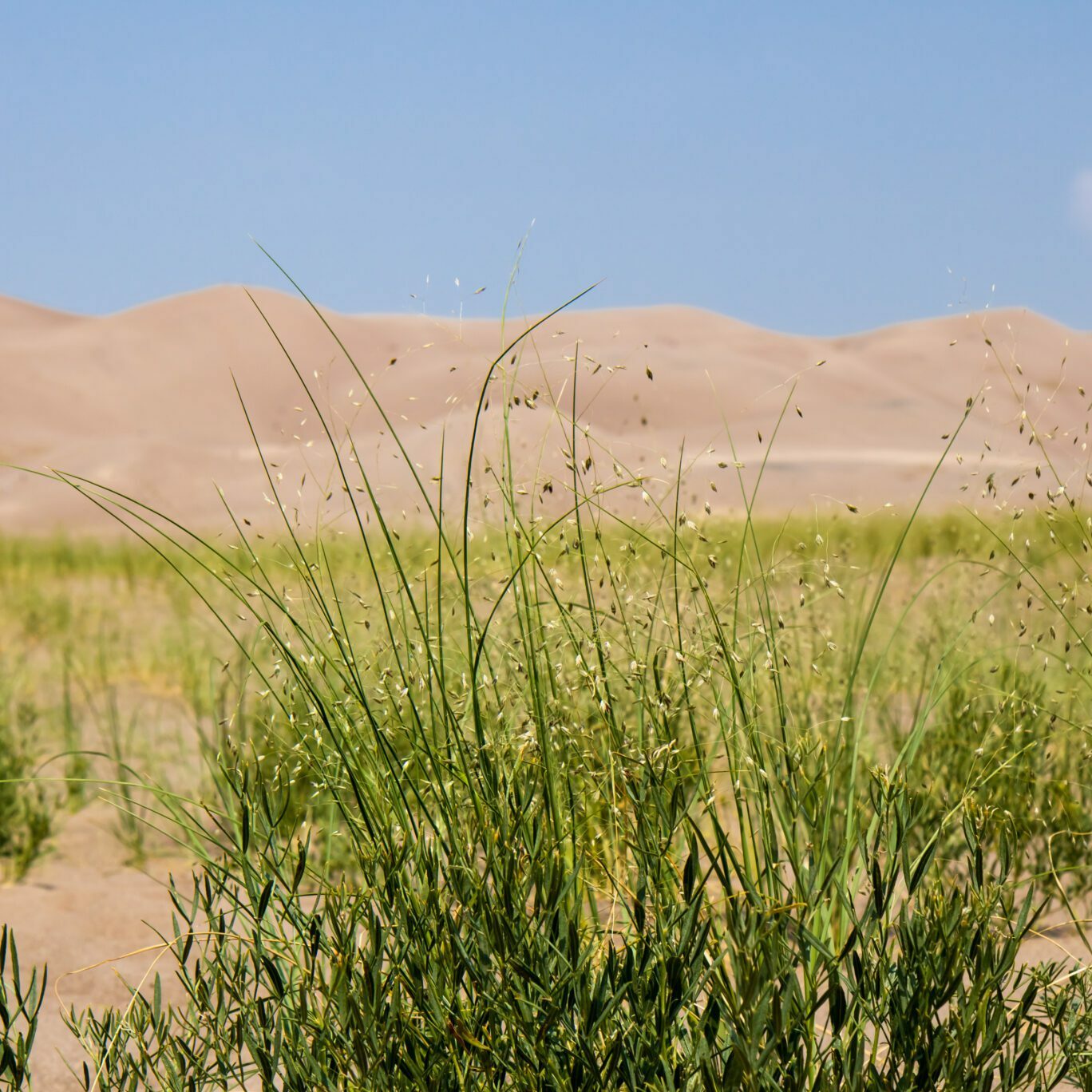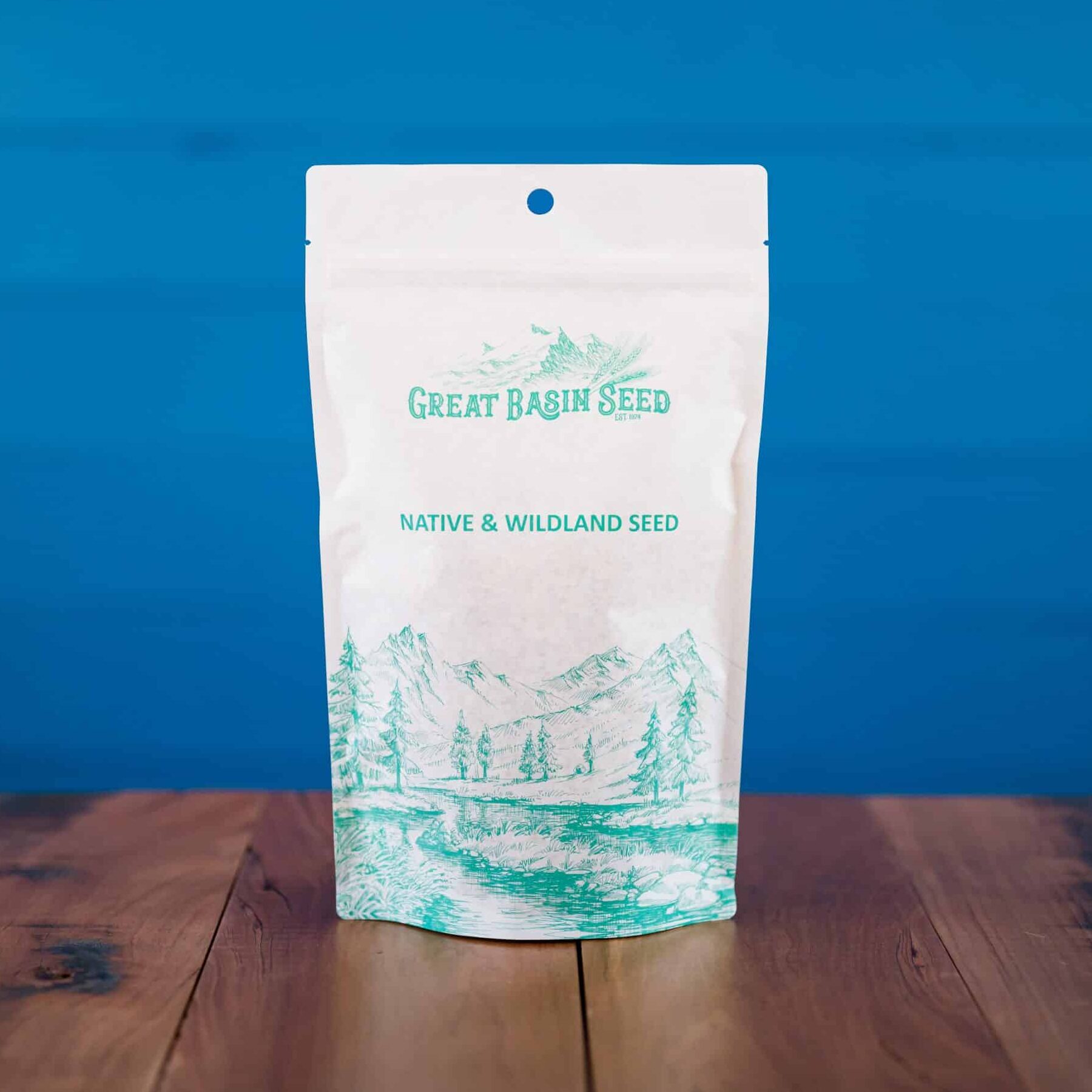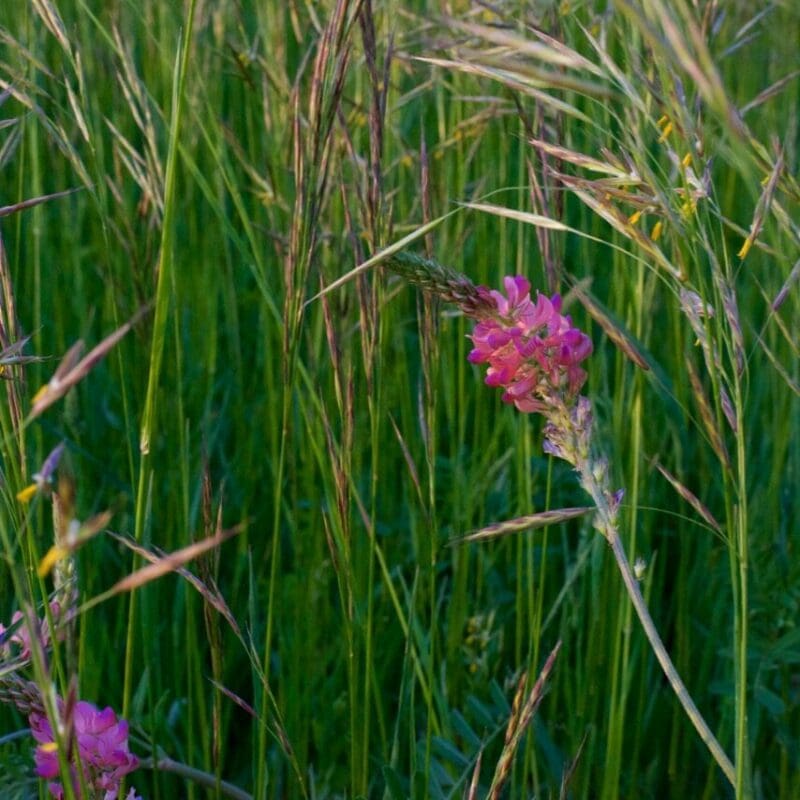 Irrigated Pasture Seed Mix near Mona, UT. This customer requested the additional Sainfoin to their mix (pink flower)
Irrigated Pasture Seed Mix near Mona, UT. This customer requested the additional Sainfoin to their mix (pink flower) Irrigated Pasture Seed Mix near Mona, UT. This customer requested the additional Sainfoin to their mix (pink flower)
Irrigated Pasture Seed Mix near Mona, UT. This customer requested the additional Sainfoin to their mix (pink flower)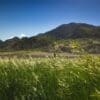

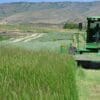
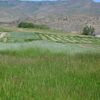

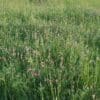
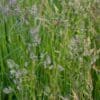
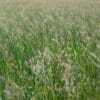
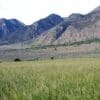
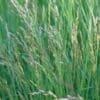

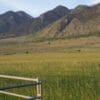
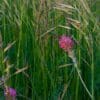

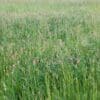


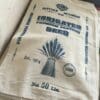
Irrigated Pasture Seed Mix
Our top-selling livestock pasture mix. Performs best with sprinkler irrigation and survives 16-18′′ annual precipitation without irrigation.
- Mid-Maturing Forage Orchardgrass
- Late-Maturing Forage Orchardgrass
- Tall Fescue, Forage Type
- Meadow Bromegrass
- Perennial Ryegrass
- Minimum order quantity of 10 pounds
Min. to Max. Annual Precipitation
48in.
Average Max. Height
Irrigated pasture grass is planted as a stand alone crop for pasture or hay. It can be used to oversee old pasture or thinning hay stands. Useful in pivot corners or isolated sections that need coverage and forage yield. Very effective at driving out weeds. Performs best under sprinkler irrigation, but can be flood irrigated once the seedlings have matured. Livestock can be turned in for pasture or it can be cut for hay. Features both mid and late-maturing varieties.
General Description:
Our Irrigated Pasture Seed Mix is a great mix for those that are wanting a premium pasture or hay stand. It is commonly sought after by farmers, ranchers and ranchette owners and livestock owners from all walks of like. It is a top seller here at Great Basin Seed. Our Irrigated Pasture Mix features both mid and late-maturing Orchardgrass varieties. Both are performance-driven forage production varieties. This allows for summer cutting AND fall pasture. It gives you a great mix of these main varieties:
- Orchardgrass
- Ryegrass
- Bromegrass
- Tall Fescue (Endophyte free).
Please call us for specific varieties as our mixes do change slightly per batch depending on what we have in stock.
Uses:
Commonly used for pasture, and hay for all class of livestock. Among other uses, it is very effective at driving out weeds.
Planting Conditions:
This mix does prefer a well drained soil as the varieties that make up this mix do not like being waterlogged. This mix prefers pH soils between 6.5 – 7.2. The varieties in this mix do grow best in full sun. The soil is best prepared with some sort of light disturbance such as a harrow. Preparation will vary from site to site and will depend upon your equipment. Planting too deep will likely result in failure. For arid situations consider out Dryland Pasture Mix.
Planting Time:
The best time for planting this mix is early, late fall or spring. For an early fall planting you need at least 8 weeks of good growth before your first hard freeze. Keep seeds watered so the soil does not dry out (high frequency, low duration) until grass is about 4-6″ tall, then switch to a low frequency, high duration cycle.
When planting late fall ensure that night temperatures are freezing and day temperatures are cool. This will allow the seeds to lay dormant throughout the winter, germinating in the spring once the soil temperatures have reached between 50-60 degrees.
For a spring planting ensure that the seed is planted after the last frost date. Keep watered so the soil does not dry out (high frequency, low duration) until grass is about 4-6″ tall, then switch to a low frequency, high duration cycle.
Seeding Rate:
Best irrigated pasture grass results are obtained when drilled, but broadcasting is the most common method of planting. Plant no deeper than 1/4″ Correct planting depth is crucial to success.
Drilled: 16lb. per acre
Broadcasted: 20lb. per acre
Watering:
Irrigated Pasture Seed Mix performs best under sprinkler irrigation, but it can be flood irrigated once the seedlings have matured. It will survive on a minimum of 16″ annual rainfall if no irrigation is present. Refer to Planting Time for more watering information.
Please call 435-283-1411 for more information or any questions you have.
Our Irrigated Pasture Seed Mix has been a best seller for over 30 years and it is still going strong. It is our #1 best selling item year after year. We attribute it’s success to our insistence on only the finest varieties selected for performance.
Our irrigated pasture mix comes standard in our signature Old Tyme cloth bags!
Custom Mixing Options: We can modify any of our mixes to your liking. Give us a call if you have a custom application that you feel requires a special recipe. 435-283-1411
The graphic above should provide a good visual reference of proper seeding depth. Note: The roll/pack step is highly recommended (but not necessary) with the broadcast seeding method. We do NOT recommend you roll/pack after drilling unless you are absolutely certain your drill is set to the shallowest possible drill depth – no more than .25″. A drill depth set too deep will result in buried seeds, poor germination and poor establishment – or failure.
Left: Ideal soil prep and proper broadcast method seed depth. The seeds have good soil contact on an even seed bed.
Right: Large dirt clods result in poor soil contact and uneven establishment. To the best of your ability, prepare an even, disturbed seed bed. What is “correct” or “ideal” will vary with your circumstances. In a range situations or on rocky ground the soil in the left photo is unrealistic.
Pasture mixes &Correct Sowing Methods
Correct sowing method is crucial for the establishment of healthy pasture. Few things have so direct an effect on success – or failure. The following methods are recommended:
Broadcast + Roll (BEST): Broadcast seed on a prepared seed bed. In small plots this is easy done by hand. For medium plots, a fertilizer broadcaster works well. In large-scale seedings a tractor/truck/SUV mounter fertilizer spreader works well. After broadcasting, walking on the area works in small areas and accomplishes the same goal as a roller. In med-large scale seedings, compact the soil surface with a push-roller or a roller mounted to a vehicle or tractor. The goal of the roller is to “press” the seed into the soil surface, ensuring the best possible soil contact.
Broadcast (GOOD): Broadcast seed on a prepared seed bed. In small plots this is easy done by hand. For medium plots, a fertilizer broadcaster works well. In large-scale seedings a tractor/truck/SUV mounter fertilizer spreader works well. DO NOT attempt to bury the seed after broadcasting.
Drilling (GOOD, BUT MUST BE DONE CORRECTLY): There are countless brands and styles of drills. Each are set to their specific make and model – there is no “universal” setting. Set your drill to the desired seeding rate and lift disks to barely scratch the surface. DO NOT bury the seeds. One of the leading causes of establishment failure is sowing too deep.
